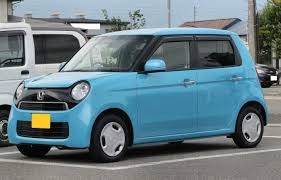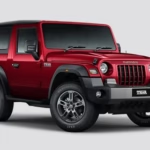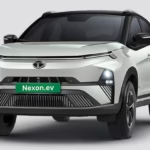Introduction
Honda has just launched its newest innovation — the Honda N-One e, an eco-friendly compact electric vehicle with retro class and cutting-edge tech. Based on the lovable N-One kei car platform, this EV is tiny in stature but laden with advanced features.
What sets this EV apart in a segment already filled with popular contenders like the Tata Tiago EV and MG Comet EV? Let’s explore the five critical features that may make the Honda N-One e one of the most awaited compact EVs in India.

- Honda reveals N-One e, a small electric car derived from its hit N-One kei car.
- Model Revealed: Honda officially revealed the N-One e, its latest electric vehicle.
- Derived From: The N-One e is developed on the hit N-One kei car platform, famous for its old-school look and urban usability.
- Car Type: A small electric car primarily suited for urban driving.
- Market Debut: Originally planned for the Japanese market, but it fits well with the needs of Indian city drivers.
- Significance: Represents Honda’s entry into the compact EV segment, highlighting its EV strategy for Asia, including India.
Why it matters: Growing demand for efficient, compact EVs in India.
- Urban Congestion: Indian cities are becoming increasingly congested; compact EVs take up less space and are easier to park and navigate.
- Rising Fuel Prices: EVs provide an affordable alternative to petrol/diesel vehicles.
- EV Push: Subsidies and incentives from the government are encouraging electric mobility.
- Demand Spike: Increasing interest in low-maintenance, affordable electric cars among the growing middle class.
- First-Time EV Buyers: Small EVs such as the N-One e are perfect for budget-friendly, city-focused buyers entering the electric market.
May this be Honda’s Maruti WagonR EV competitor?
- Potential Rival: The Honda N-One e may prove to be a direct threat to Honda’s much-speculated Maruti WagonR EV.
- Similar Segment: Both target the affordable, compact city EV space — ideal for daily urban commutes.
- Design Advantage: The Honda N-One e offers a retro-modern appeal, potentially attracting younger buyers or design-conscious users.
- Honda’s premium positioning could give it an upper hand in perceived quality over Maruti.
- If Locally Assembled: With local production or CKD plans, Honda could price the N-One competitively against Maruti’s expected EV entry.
Overview: What is the Honda N-One e?
The Honda N-One e is the electric variant of Honda’s popular N-One kei car — a Japanese cult favorite famous for its retro looks, small size, and nimble city driving. Now resurrected in EV form, the N-One e keeps its traditional character but replaces the petrol engine with a clean, quiet electric motor.
The Honda N-One e is below 3.5 meters in length, perfect for congested city centers and cramped parking spaces. It’s not about being small, though — it’s about being innovative, efficient, and chic. With understated styling adjustments to accentuate its electric persona, and fresh EV tech crammed within, the N-One e is like a contemporary reboot of Honda’s city car heritage.
Unveiled now for Japan, industry insiders say this might be one of Honda’s first genuine EV rivals for India in the next few years, particularly as Honda plans its EV assault across Asia from 2025.
Electrified variant of Honda’s retro-fitted N-One kei car
- Electrified Avatar: Honda’s N-One e is the electric variant of its hit N-One kei car.
- Retro-Styling Carried Over: Preserves the retro-style look of the original N-One, with round headlamps and boxy shape.
- Evolving for EV Times: Minimal design alterations, such as a closed grille and EV badging, pay homage to its electric heritage.
- Compact Size: Designed to fit kei car specifications — ideally suited for narrow city streets and urban commuting.
- Zero Emissions, Same Charisma: Merges vintage appearance with a clean, all-electric powertrain.
Design with an urban twist, perfect for city runs
- City-First Design: The N-One e is designed with city commuting in mind.
- Compact Dimensions: Compact size makes driving and parking in city niches a breeze.
- Tight Turning Radius: Ideal for zipping through narrow lanes and crowded traffic.
- Efficient Range for Daily Use: Suitable for daily use, short-distance travel typical of metropolis cities like Delhi, Mumbai, and Bengaluru.
- Practical Day-to-Day EV: Designed for the requirements of working professionals, students, and small city families.
- Launch in Japan expected towards late 2025; India under study (anticipated through CKD or local production)
- Launch Timeline in Japan: Honda N-One e is scheduled to launch in Japan towards the end of 2025.
- India Launch Under Study: It is said Honda is considering launching the N-One e in India.
- Localization Strategy: Expected to come through CKD (Completely Knocked Down) kits or domestic assembly to maintain competitive pricing.
- EV Roadmap Alignment: Aligns with Honda’s overall EV launch plans for India from 2025–26.
5 Key Features of the Honda N-One e
Head-Turning Retro-Futuristic Design
The Honda N-One e combines vintage flair with next-generation design elements. The original Honda N-One, now augmented by EV-specific features such as aero wheels, blue highlights, and a closed front bumper. It’s a vehicle that resonates with both nostalgia fans and future-generation city drivers.
- Retro Flair: Maintains the iconic round LED headlamps and boxy profile of the first-generation N-One kei car.
- Contemporary Flair: Equipped with aerodynamic LED lighting, aero-optimized wheels, and a minimalist closed front grille for an EV-future-proof appearance.
- Blue Accents & Badging: EV-specific design cues alert to its electric nature without losing style points.
- Compact But Bold: Despite its diminutive size, the N-One e cuts a sharp road presence with its upright stance.
- Young Appeal: Combines modernity with nostalgia — an ideal combination for young urban consumers and city lovers.
Space to Spare, Compact Size
The Honda N-One e is masterfully engineered to offer maximum interior space. The flat floor, achieved through the underbody battery, provides more leg space and cabin flexibility. With foldable rear seats and vertical height, it is a great daily commutability, grocery shopper, or weekend mini-tripper.• Sub-3.5 Meter Length: Ideal for narrow city streets and small parking spaces.
- Intelligent Interior Space: It may be small, but the cabin is spacious and well-organized.
- Flat Floor Architecture: Because of the underfloor battery, riders have extra legroom and convenient mobility within.
- Rear Seats Foldable: Provides adaptive storage space for luggage, shopping, or equipment.
- Kei Car Benefit: Preserves the classic tall-boy platform to provide plenty of headroom and comfortable upright seating.
Urban-Friendly Range with Rapid Charging
The Honda N-One e provides an actual range of 200–250 km on a single charge, perfect for metro city use. From Mumbai office commutes to Bengaluru errand-running, it has enough energy for 3–4 days’ worth of city driving. Support for fast charging (up to 80% in ~35–40 minutes) is an added convenience.
- Practical Daily Range: Projected real-world range of 200–250 km per charge, perfect for city use.
- Low Running Expenses: Ideal for regular office journeys, errands, and weekend cruises.
- Fast Charging Capability: Expected to support DC fast charging up to 80% in 35–40 minutes.
- AC Home Charging: Comfortable overnight charging through a standard home plug or wall box.
- Optimized for Urban Usage: Positioned as a hassle-free, plug-and-play offering for metro EV owners.
Tech-Loaded Cabin with Premium Feel
The inside is not only practical — it’s also intelligent and chic. Look for additions such as a 7-inch digital MID, floating touchscreen infotainment, and Apple CarPlay & Android Auto compatibility. Advanced safety items such as Honda SENSING (equipped in the Japanese model), including lane assist, adaptive cruise control, and emergency braking, should also be available.
- Digital Instrument Cluster: Boasts a contemporary 7-inch digital multi-info display (MID) for EV information and driver information.
- Floating Touchscreen Infotainment: Offers Apple CarPlay and Android Auto compatibility for easy smartphone integration.
- Minimalist Dashboard Layout: Minimal, uncluttered layout adds to cabin sophistication and visibility.
- Intelligent Storage: Several cubbies, bottle receptacles, and charging stations contribute to the daily practicality.
- Luxury Touchpoints: Fancy materials, plush fabric seating, and ambient features provide a sophisticated atmosphere for a small EV.
Accessible Entry into Electric Mobility
The largest surprise? It’s estimated price tag. In Japan, the N-One e would cost less than Rs 15 lakh (converted), pitting it closely with the Tata Tiago EV, MG Comet EV, and Citroën eC3. If Honda imports it to India through CKD assembly or local manufacture, it stands a good chance of being one of the most value-loaded small EVs on Indian roads.
- Expected Japan Price: Placed in the region of Rs 12–15 lakh (converted), which is competitively positioned for an EV.
- India Strategy: If launched through CKD or local assembly, it can be positioned to compete with the Tata Tiago EV, MG Comet EV, and Citroën eC3.
- Low Ownership Costs: Low running costs, lower maintenance, and incentives from the government make it a cost-effective urban EV.
- Value for Money: Comes with premium features and safety technology usually found on more expensive vehicles.
- •Target Buyer: Ideal for new EV users, city professionals, and urban families who want to make the transition to clean mobility.
Market Relevance: Will It Come to India?
The Honda N-One e has been officially unveiled for the Japanese market, its form and functionality make it virtually tailor-made for Indian cities. With traffic jams, cramped parking spaces, and escalating fuel prices, small electric cars are in great demand—and the N-One e meets that requirement perfectly.
Honda has already announced its India EV plans from 2025–26, and vehicles such as the N-One e would be perfect entry points. In the event of the car being imported through CKD kits or localized manufacturing, Honda can maintain competitive pricing against current competition, such as the Tata Tiago EV and MG Comet EV. More significantly, it would enable Honda to regain dominance in the compact car segment—but this time without any emissions. Although a formal India launch date has not been declared as of now, the N-One e fits perfectly with both the market and Honda’s long-term electric strategy for India.
- Honda made an EV rollout commitment in India from 2025–26
- EV Launch Timeline: Honda has affirmed its electric vehicle rollout in India will start from 2025–26.
- India-specific EVs: Plans for locally-relevant, small electric models suited to Indian road conditions.
- EV Platform: A new platform is being developed by Honda, which will accommodate small to mid-size EVs in India.
- Manufacturing Plans: Expected to include local production or CKD assembly to keep prices competitive.
- Long-Term Vision: Part of Honda’s long-term strategy to electrify its Indian lineup by 2030 and align with India’s clean mobility vision.
Honda N-One can be a good bet in the city-EV segment.
- Urban Relevance: Tight dimensions, nimble handling, and useful range make it ideally suited for regular city commutes.
- Segment Alignment: Exactly where the emerging urban EV segment fits, competing with Tiago EV, MG Comet, and Citroën eC3.
- Premium Intimacy: Provides upscale design and amenities in an affordable package, pitting it against entry-level competition.
- EV-Ready Dimensions: Kei car dimensions fit well for the congested streets and narrow parking spaces of Indian metros.
- Potential First-Mover Advantage: Might assist Honda in regaining lost ground in the compact car space with an electric spin.
India-friendly: small footprint, decent range, contemporary tech
- Small Footprint: Its compact size is ideal for driving on crowded Indian roads and thin lanes.
- Easy Parking: Perfect for narrow urban parking in cities such as Delhi, Mumbai, and Chennai.
- Real-World Range: Projected 200–250 km range is adequate for regular daily use without anxiety about running out.
- Contemporary Tech Features: Fitted with digital screens, networked infotainment, and sophisticated safety technologies, it is attractive to Indian buyers accustomed to technology.
- Well-Balanced Package: Provides a relatively unusual mix of frugality, good looks, and intelligent features within an affordable EV form.
Debut strategy through Honda’s new EV-only platform?
- EV-Specific Architecture: Honda is creating an EV-dedicated platform for compact and mid-size electric cars.
- Localized Engineering: The platform will be capable of supporting India-specific models with range, charging, and price optimization.
- Scalable Design: May enable Honda to introduce a range of EVs, such as hatchbacks, crossovers, and city cars like the N-One e.
- Strategic Fit: Placing the Honda N-One e on this platform would establish Honda as a genuine contender in the urban EV market, rather than a follower.
Competitive Brands of Honda N-one
| Feature | Honda N-One e (Expected) | Tata Tiago EV | MG Comet EV | Citroën eC3 |
| Body Type | Compact Hatch (Kei-based) | Hatchback | Micro Car (3-door) | Hatchback |
| Expected Price (Rs ) | Rs 12–15 lakh* | Rs 8.69 – Rs 11.99 lakh | Rs 6.99 – Rs 9.39 lakh | Rs 11.61 – Rs 13 lakh |
| Range (Claimed) | 200–250 km (est.) | 250 – 315 km | 230 km (ARAI) | 320 km (ARAI) |
| Charging Time (Fast) | ~35–40 min (up to 80%)* | ~57 min (50 kW) | ~40 min (DC fast charger) | ~57 min (DC fast charger) |
| Charging Time (Home) | 6–7 hours (AC charger)* | ~6.9 hours (AC) | ~7 hours (AC) | ~10.5 hours (AC) |
| Motor Power (kW) | ~30–40 kW* | 45 kW / 55 kW | 31 kW | 43.5 kW |
| Top Speed | ~100–120 km/h* | ~120 km/h | 100 km/h | 107 km/h |
| Seating Capacity | 4 (tall-boy layout) | 5 | 4 | 5 |
| Infotainment System | Touchscreen + Digital MID | 7″/8″ Touchscreen + MID | 10.25″ Infotainment | 10.2″ Touchscreen |
| ADAS / Safety Tech | Honda Sensing (Japan only) | No | No | No |
| USP | Retro design + Compact luxury | Proven, affordable EV | Smallest EV, stylish inside | Bigger size, SUV stance |
Conclusion: Why the Honda N-One e Deserves Attention
Honda N-One e is an impressive combination of retro-styled looks, daily usability, and an uncluttered electric drivetrain. It would be a perfect fit in India’s changing urban mobility landscape. In a market moving toward mini EVs, the N-One e restores Honda’s heritage in the small car segment—but with a modern, zero-emission twist.
Its small footprint, intuitive tech, and city-friendly range make it not only a clever commuter but an urban lifestyle upgrade for drivers. If Honda can make it available in India with a competitive price tag—using CKD kits or local production—it might well redefine the entry-level EV segment. For new buyers of EVs who want quality, character, and affordability in a single package, the N-One e could be the game-changer they have been waiting for.
FAQs of Honda N-one
Q1. What would be the approximate cost of the Honda N-One e in India?
The Honda N-One e is likely to cost between Rs 12 and Rs 15 lakh if it is launched in India. Though it is currently developed for the local Japanese market, Honda might bring it to India through CKD assembly or regional production, which might help maintain competitive pricing in comparison to competitors such as the Tata Tiago EV and MG Comet EV.
Q2. What is the real-world range of the N-One e?
The Honda N-One e will have a real-world range of 200 to 250 km per charge, which will make it suitable for day-to-day city commutes and short intra-city trips. It gets the best of range and usability, and serves the needs of the urban Indian customer well.
Q3. Will Honda launch the N-One e in India?
So far, the N-One e is officially launched in Japan, but Honda has announced that its India EV launch will start in 2025–26. With its compact size and city-centric appeal, the N-One e is an ideal contender for the Indian market, particularly under Honda’s new EV strategy.
Q4. How does the N-One e compare with the MG Comet EV and Tiago EV?
The Honda N-One e also comes with a more upscale design and tech-laden interior, but in the same compact package as the MG Comet EV, with a more traditional 5-door layout similar to the Tiago EV. It might cost a bit more but boasts retro-futuristic styling, digital cockpit, and possible Honda SENSING safety features, which could make it a top pick for buyers who want a vehicle that’s stylish and sophisticated.
Q5. Is the Honda N-One e fast charge-capable?
Yes, the Honda N-One e should be DC fast charge-capable, capable of charging to 80% in approximately 35–40 minutes. It will also have AC home charging compatibility, allowing for easy overnight and quick top-up charging sessions.




